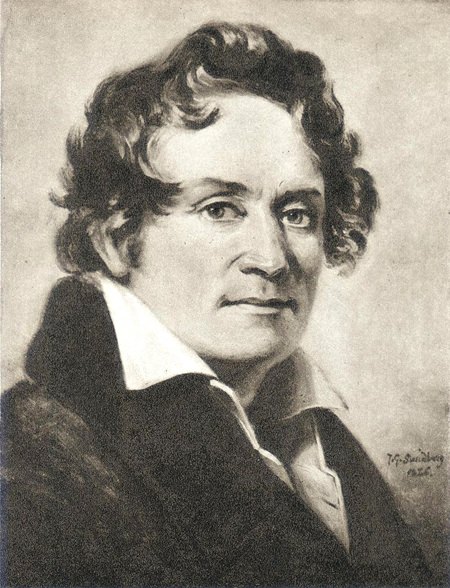
Now I am not a betting person, you understand but it’s a pretty safe wager that you can’t name more than five Finnish classical composers. This is because there are not very many of them. Not very many at all. There’s Sibelius of course, but for many of us, that’s about it. Wikipedia lists only two Finnish composers who lived during the eighteenth century and only sixteen from the nineteenth.
Please Support Pattaya Mail
I suppose the reason that composers were such rare beasts in eighteenth century Finland was partly because the action was elsewhere. At the time, musicians generally relied on patronage to make a living and the decent job opportunities tended to be in the royal courts further south. There was little incentive to be a composer.
Fredrik Pacius is often described as “the father of Finnish music” even though he was actually German. This is perhaps a bit unfair on Bernhard Henrik Crusell who was a genuine Finn and born thirty-four years earlier. Then there was Armas Järnefelt whose orchestral pieces Berceuse and Praeludium have become well-known, though he spent most of his life as a conductor. You might recall the name of the pianist and conductor Selim Palmgren whose piano music has become well established.
The twentieth century is a different story because it has seen a veritable explosion of emerging talent, perhaps inspired by the international success of Sibelius and the development of Finnish music education. Even so, few names have made a significant impact outside the country with the exceptions of Sven Englund, Einojuhani Rautavaara and Esa-Pekka Salonen, better known at the moment as a conductor of international repute.
If Mozart’s Clarinet Quintet is among your favourite works, I can almost guarantee that you’ll fall for this delightful quartet, written eighteen years later around 1807. The work is reminiscent of the Viennese classical style and occasionally we hear distinct echoes of Mozart. And like Mozart and Schubert, Crusell had a gift for writing flowing, lyrical melodies that are perfect for the clarinet.
The work follows the usual classical four-movement structure. It opens a slow introduction in octaves leading into the sprightly first movement and then there’s a remarkably beautiful slow second movement which displays the composer’s wonderful gift for melody and sensitivity to harmony. It’s followed by a delicate, skipping minuet and folk-dance like trio and a nimble rondo to finish. This is a finely-crafted work which is popular among clarinet players but really deserves to be better-known among the general public.
Crusell spent most of his lifetime in Sweden although he always considered himself Finnish. He was not only a composer but also a clarinetist and a jolly good one at that. He gave highly acclaimed concerts and solo recitals all over Europe and was evidently admired for the roundness and beauty of his clarinet tone quality.
This is a splendid performance with exemplary playing and glorious pure tone and clear articulation from clarinetist Romie de Guise-Langlois. The string playing is superb too and there are several “magic moments” during the performance.
Jean Sibelius needs little introduction and this relatively early work from 1893 remains one of his best-known. He is generally regarded as the greatest Finnish composer, even though he doesn’t have a Finnish name. His first name is French (and should be pronounced as such) and his last name comes from Latin and is pronounced sih-BAY-lee-oos. It is not pronounced as sigh-BEE-lee-us as one of my linguistically-challenged friends likes to say.
The light-hearted Karelia Suite has three movements but originates from a much longer commissioned work consisting of an overture followed by eight other movements. The opening Intermezzo is probably the best known movement because the middle section was used in a British current affairs television series called This Week which ran from 1956 to 1979. The Intermezzo opens with quiet tremolo strings over which fragments of the melody appear among the brass. The brilliant march-like tune eventually emerges before once again fading away into the atmosphere of the movement’s beginning.
The dark and sonorous second movement is entitled Ballade and gives a glimpse of the composer’s later unmistakable personal style. The final movement, Alla Marcia is another lively march, beginning with a jaunty melody on the strings leading to a jubilant section featuring the brass.
This is a thrilling performance of the work by this Dutch orchestra. Sadly in 2013, the Dutch government announced a total cut of the orchestra’s funding. On 14th July the same year, the orchestra gave its last performance at Amsterdam’s legendary concert hall, the Concertgebouw. It must have been a melancholy occasion.
 |
 |
 |





